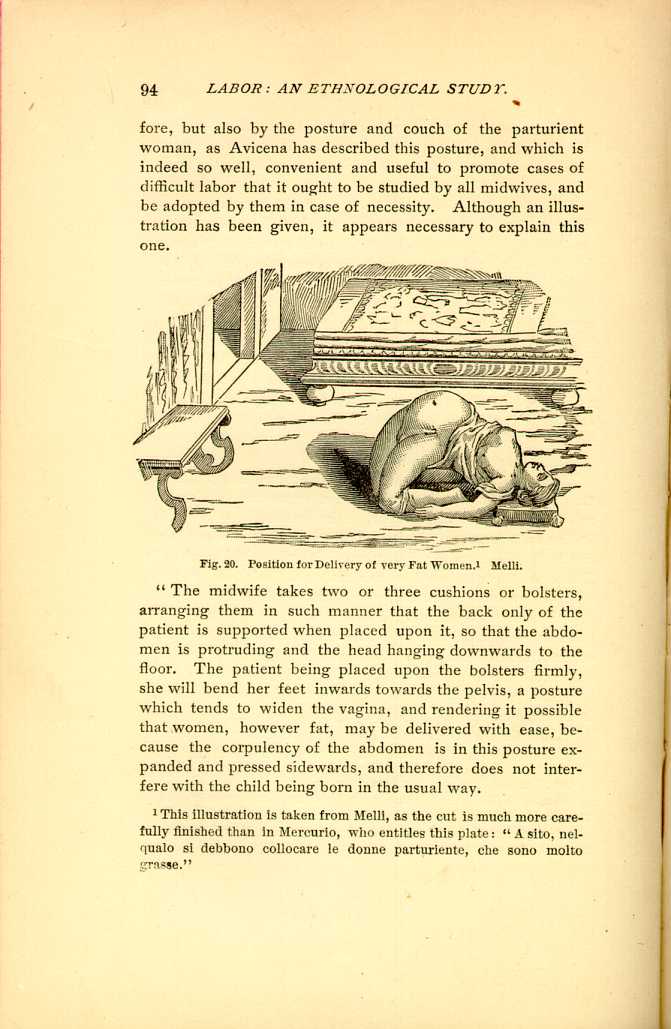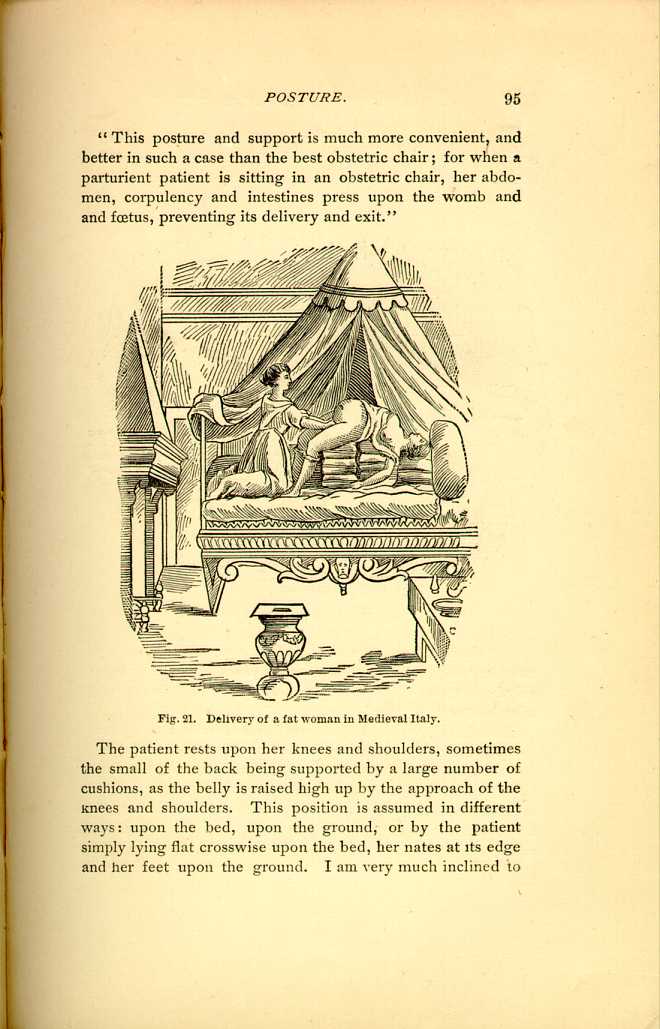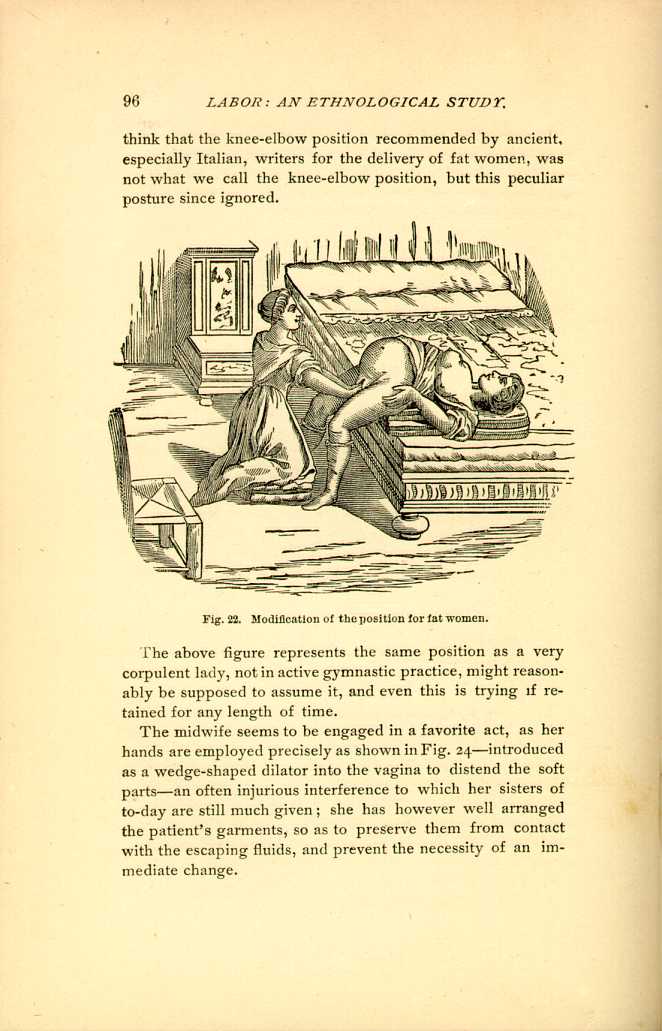| CHAPTER II.
POSTURE IN LABOR. Labor Among Primitive Peoples | ||
(b.)1.) Inverse Knee-Elbow Position.
This peculiar, and apparently strained, position has, like the knee-elbow position itself, been recommended for the relief of fat women in labor, more particularly by early Italian and German authorities. Thus Melli,[73] who however credits it to Mercurio,[74] "e prima di lui gli antichi maestri.'' The advantages assigned for this rather difficult position are, that the pressure of intestines and fat is thus removed; but as by the kindness of Drs. Fletcher and Yarrow, of the Surgeon General's Library in Washington, photographs of the original illustrations have been furnished me, they will be best explained in the words of Melli, p. 288, as follows:
"How a pregnant woman, who is very fat and corpulent, is to be placed and managed during labor.
"Difficult labor, caused by excessive corpulency, may be facilitated not only by the ordinary remedies prescribed before,

Fig.20. Position for Delivery of very Fat Women.[75] Melli.
[Description: Woman lies on her back, with her knees folded under her and her back arched. Black and white illustration.]"The midwife takes two or three cushions or bolsters, arranging them in such manner that the back only of the patient is supported when placed upon it, so that the abdomen is protruding and the head hanging downwards to the floor. The patient being placed upon the bolsters firmly, she will bend her feet inwards towards the pelvis, a posture which tends to widen the vagina, and rendering it possible that women, however fat, may be delivered with ease, because the corpulency of the abdomen is in this posture expanded and pressed sidewards, and therefore does not interfere with the child being born in the usual way.
"This posture and support is much more convenient, and
better in such a case than the best obstetric chair; for when a
parturient patient is sitting in an obstetric chair, her
abdomen, corpulency and intestines press upon the womb and
and fœtus, preventing its delivery and exit.''

Fig. 21. Delivery of a fat woman in Medieval Italy.
[Description: Pregnant woman lies upon a bed, her back and head elevated upon
stacks of bedding. Another woman attends her.]
The patient rests upon her knees and shoulders, sometimes the small of the back being supported by a large number of cushions, as the belly is raised high up by the approach of the knees and shoulders. This position is assumed in different ways: upon the bed, upon the ground, or by the patient simply lying flat crosswise upon the bed, her nates at its edge and her feet upon the ground. I am very much inclined to

Fig. 22. Modification of the position for fat women.
[Description: Pregnant woman lies across bed, with her feet on the floor. Another woman kneels at bedside to deliver her. Black and white illustration.]The above figure represents the same position as a very corpulent lady, not in active gymnastic practice, might reasonably be supposed to assume it, and even this is trying if retained for any length of time.
The midwife seems to be engaged in a favorite act, as her hands are employed precisely as shown in Fig. 24—introduced as a wedge-shaped dilator into the vagina to distend the soft parts—an often injurious interference to which her sisters of to-day are still much given; she has however well arranged the patient's garments, so as to preserve them from contact with the escaping fluids, and prevent the necessity of an immediate change.
| CHAPTER II.
POSTURE IN LABOR. Labor Among Primitive Peoples | ||